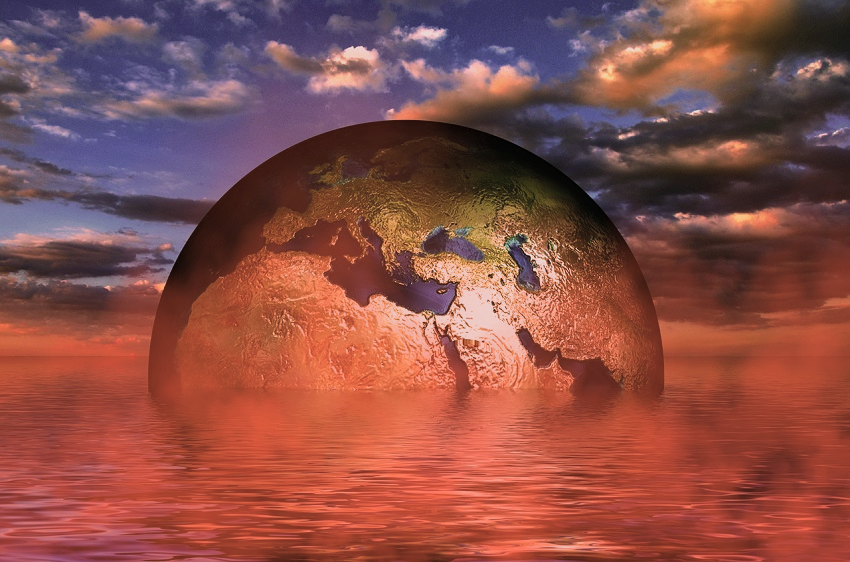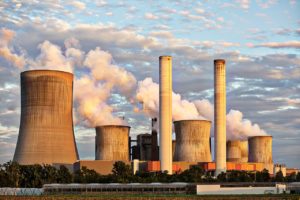
Our societies are currently facing a huge number of problems and our modern way of life is responsible for at least two of them: from the huge existential climate crisis to the relatively obscure fatberg problem plaguing our cities. It can be difficult to see the links between these two, but they are there: let’s take a closer look…
First up, the basics:
What’s a Fatberg and What’s Climate Change?
A fatberg is a solid mass of congealed fats, oils and grease (FOGs) which were once used in cooking. When those FOGs are poured down our drains, one way or another, they cool and combine in our sewers, building up gradually over time into a concrete-like lump which, eventually, blocks the sewer. Fatbergs often catch many other nasties floating past them, from used wet wipes (which help bind the fatbergs together) to the human waste which makes for the fatbergs’ toxic stench. Historically occurring mainly in heavily populated areas, fatbergs have now been found in quieter locations showing the problem is only getting worse.
Climate change, meanwhile, is a much more familiar issue, happening on a global scale. While the Earth’s climates have changed many times historically, swinging in and out of Ice Ages, what people usually mean when they talk about climate change at the moment is Anthropogenic, human-caused climate change. The industries which prop our society up, from agriculture to fossil fuels, emit greenhouse gases, the most common being carbon dioxide and methane, which build up in our atmosphere. Floating around up there, they allow infrared radiation from the sun to fall onto the Earth’s surface but the greenhouse gases don’t let it leave: the radiation reflects off of the Earth’s surface only to be sent back down once it hits this layer of greenhouse gases. So: the surface of the Earth gets a double heating, and temperatures go up: the globe warms.

Where’s the Link Between the Two?
As the climate crisis deepens, will the fatberg problem only get worse?
Global warming disturbs weather systems, making weather more erratic: extreme weather events become more and more common until extreme weather becomes the new normal.
In the UK, one of the biggest impacts of climate change will be increased rainfall and increased risk of flooding: the Committee on Climate Change predicts that, in the next 100 years, the cost of flood damage will more than double, whatever happens, while 1 million more homes will come to be at risk of regular flooding.
If our sewers continue to be clogged by fatbergs, they’ll be less able to cope with the increase in rainfall: we’ll see more floods and we’ll see more raw sewage directed straight into our waterways, or even, in the worst-case scenario, back up our drains and into our homes. As the climate changes, the largely-invisible fatberg problem will become ever more noticeable.
It can be trickier to see how the fatberg problem can make climate change worse.
While those decomposing blocks of FOGs and human waste do emit their share of the greenhouse gas methane, they don’t have much of a direct responsibility for climate change.
The fatberg problem does, however, contribute to climate change indirectly. In particular: Fatbergs Waste Resources
There are the cleaning chemicals we use to unblock drains clogged by FOGs: those cleaning chemicals, which we wouldn’t have to use otherwise, are the end product of a long manufacturing process which itself emits a huge amount of CO2.
Then there’s the energy and resources needed to remove fatbergs: the energy and water for the high-powered jet hoses and the electricity for the lighting which water company workers need to get the job done. Fatberg removal consumes electricity which, more often than not, comes from the burning of fossil fuels, which, again, emits greenhouse gases.
And then there’s the money which water companies have to spend on removing and treating fatbergs which they could instead have spent on environmental initiatives. If our water companies weren’t so preoccupied fighting these monsters in our sewers, for instance, they might be doing, even more, to make their water treatment facilities more efficient or to foster the wildlife which forms ecosystems in, on and around our waterways.

The Impact of Fatbergs on the Environment Can Be Reduced
Projects such as the one run by Thames Water and Argent Energy promise to transform fatbergs into biofuel, making up for some of the fuel burnt while extracting the bergs from our sewers.
It’s still crystal clear however that it would be much better for the environment if there wasn’t a fatberg problem in the first place.
If FOGs didn’t get into our sewers and become fatbergs, we wouldn’t have to use all of that energy and create all of those unnecessary emissions, and we definitely wouldn’t have to worry about raw sewage bubbling out of our toilets every time there’s a rainstorm.
Invest in a good quality stainless steel grease trap or automatic grease trap (or Grease Recovery Unit) and stop those FOGs in their tracks: you might just save the world.

Leave a Comment
Your email address will not be published. Required fields are marked *